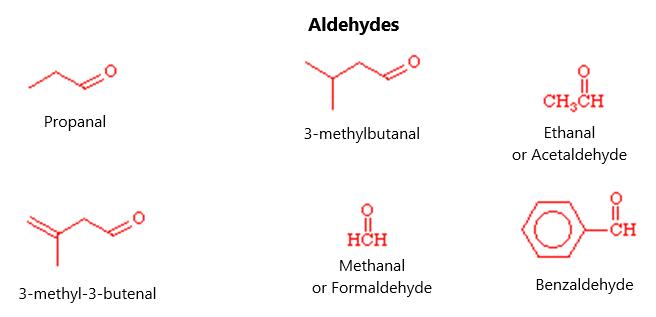Figure 43.
The nucleophile will be a negatively charged ion or a molecule that has a lone electron pair like ammonia or NH3. As you can see, the first thing that happens in the reaction is that the double bond gets broken with an addition reaction happening after that. Aldehydes, in particular, are easily oxidizable because of the hydrogen attached to the carbon atom. This just doesn’t happen easily in ketones unless there are powerful oxidizing agents involved.
REACTIVITY OF ALDEHYDES AND KETONES Small aldehydes, like methanal and ethanal will be gaseous or will boil close to room temperature. Larger molecules will have higher boiling points and will be liquid at room temperature. As the molecule gets bigger, there will be more electrons as part of it and there will be increased van der Waals attraction forces. This would be true even if it weren’t an aldehyde or ketone. The addition of polarity means that there will be dipole-dipole attraction forces, leading to higher boiling points than the corresponding alkane. Consider the 3-carbon alkane, which has a boiling point of -42 degrees Celsius; this increases to 21 degrees Celsius in aldehydes because of polarity. Alcohols will have hydrogen bonding, further increasing the boiling point. As mentioned, solubility in water with aldehydes and ketones depends mainly on chain length. The small aldehydes and ketones are fully miscible with water because, while they can’t hydrogen bond with themselves, they can hydrogen bond with water. This can be hydrogen bonding between the lone pairs of electrons on the carbonyl oxygen
82




























































